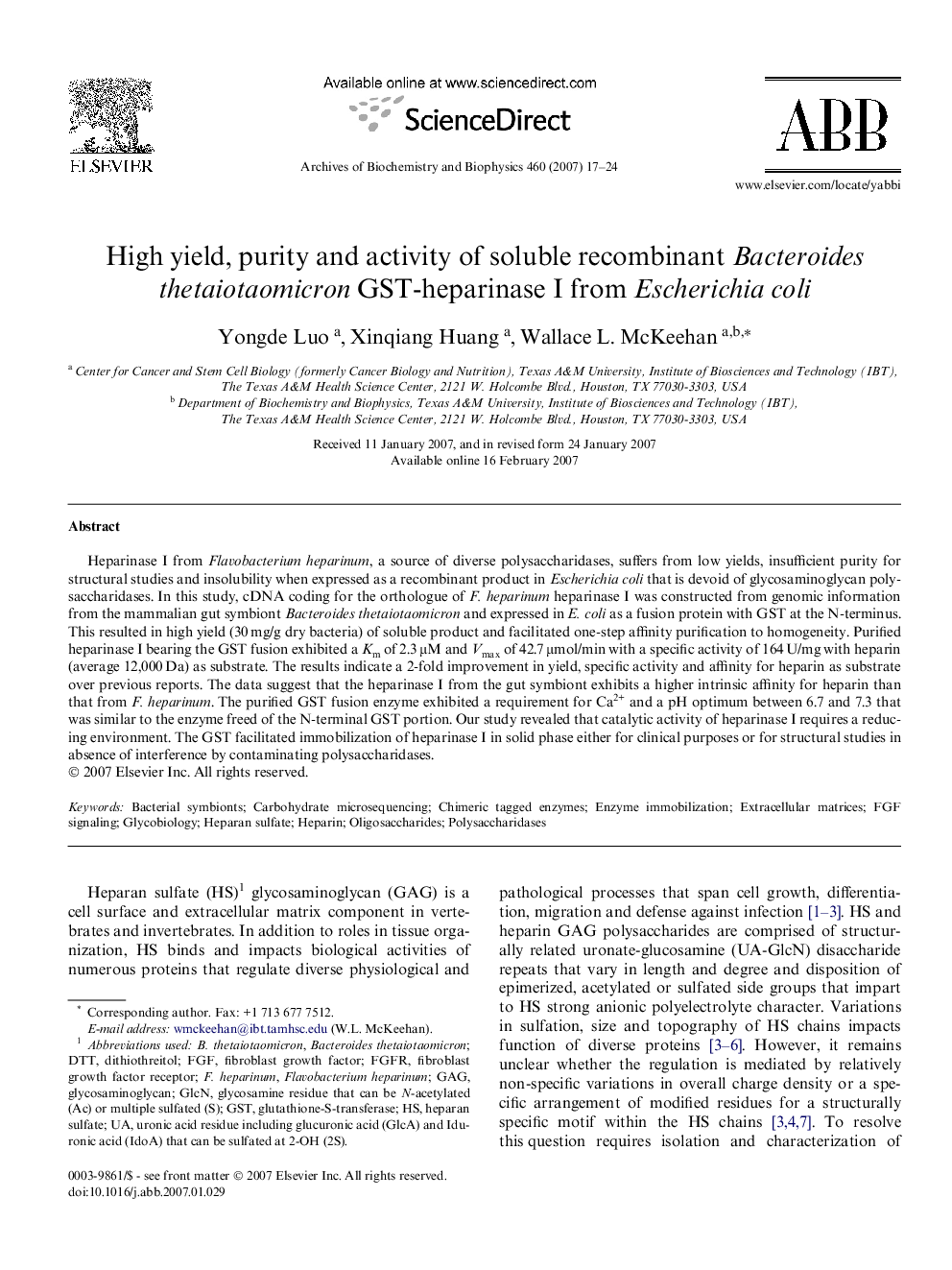| کد مقاله | کد نشریه | سال انتشار | مقاله انگلیسی | نسخه تمام متن |
|---|---|---|---|---|
| 1927234 | 1536506 | 2007 | 8 صفحه PDF | دانلود رایگان |

Heparinase I from Flavobacterium heparinum, a source of diverse polysaccharidases, suffers from low yields, insufficient purity for structural studies and insolubility when expressed as a recombinant product in Escherichia coli that is devoid of glycosaminoglycan polysaccharidases. In this study, cDNA coding for the orthologue of F. heparinum heparinase I was constructed from genomic information from the mammalian gut symbiont Bacteroides thetaiotaomicron and expressed in E. coli as a fusion protein with GST at the N-terminus. This resulted in high yield (30 mg/g dry bacteria) of soluble product and facilitated one-step affinity purification to homogeneity. Purified heparinase I bearing the GST fusion exhibited a Km of 2.3 μM and Vmax of 42.7 μmol/min with a specific activity of 164 U/mg with heparin (average 12,000 Da) as substrate. The results indicate a 2-fold improvement in yield, specific activity and affinity for heparin as substrate over previous reports. The data suggest that the heparinase I from the gut symbiont exhibits a higher intrinsic affinity for heparin than that from F. heparinum. The purified GST fusion enzyme exhibited a requirement for Ca2+ and a pH optimum between 6.7 and 7.3 that was similar to the enzyme freed of the N-terminal GST portion. Our study revealed that catalytic activity of heparinase I requires a reducing environment. The GST facilitated immobilization of heparinase I in solid phase either for clinical purposes or for structural studies in absence of interference by contaminating polysaccharidases.
Journal: Archives of Biochemistry and Biophysics - Volume 460, Issue 1, 1 April 2007, Pages 17–24